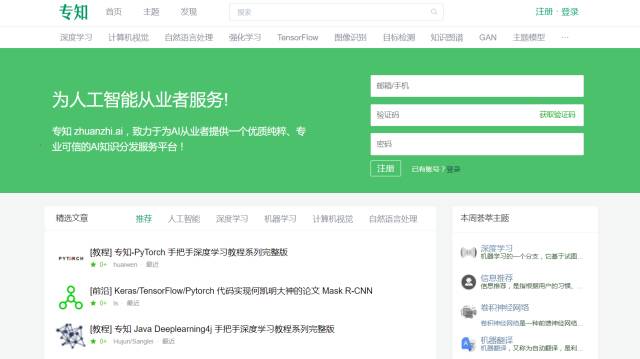TensorFlow 日常更新:加入 AutoGraph,简化构图流程
【导读】谷歌发布了一个新的 TensorFlow 工具「AutoGraph」,旨在快速将Python 代码转化到TensorFlow体系里。目前测试来看,这一工具简化了构图流程,加强了 TensorFlow 调用Python 时的性能。
作者 | Alex Wiltschko, Dan Moldovan, Wolff Dobson
整理 | Huaiwen
在正常版的 TensorFlow中,代码构建流程是:先构建算法的计算图,然后feed数据, 然后执行计算图。当然因为当前 PyTorch等动态计算图的流行,TensorFlow 也发布了 Eager Execution,它可以帮助用户自动构建计算图。但一般的 TensorFlow 还是常使用静态计算图的方式,因为它的构建逻辑与部署都非常有优势。
然而,静态计算图比较难理解,它与日常那种从上至下一句一句执行的逻辑相违背。尤其是在一些涉及复杂模型场景中,例如使用 if 和 while 等 Python 语句,或使用 print() 与接受结构化输入等,Tensorflow 总会让人感到深深的无力。
总于,最新加入的 Feature:AutoGraph 可以自动搞定上述事情。
使用 autograph.convert() 装饰器来装饰函数,AutoGraph 将自动生成图可用的代码。
比如:
@autograph.convert()
def huber_loss(a):
if tf.abs(a) <= delta:
loss = a * a / 2
else:
loss = delta * (tf.abs(a) - delta / 2)
return loss在执行时变成如下代码:
def tf__huber_loss(a):
with tf.name_scope('huber_loss'):
def if_true():
with tf.name_scope('if_true'):
loss = a * a / 2
return loss,
def if_false():
with tf.name_scope('if_false'):
loss = delta * (tf.abs(a) - delta / 2)
return loss,
loss = ag__.utils.run_cond(tf.less_equal(tf.abs(a), delta), if_true,
if_false)
return loss
接下来,你可以调用你的代码,就像使用一般的 TensorFlow op 一样:
with tf.Graph().as_default():
x_tensor = tf.constant(9.0)
# The converted function works like a regular op: tensors in, tensors out.
huber_loss_tensor = huber_loss(x_tensor)
with tf.Session() as sess:
print('TensorFlow result: %2.2f\n' % sess.run(huber_loss_tensor))
如此看来,AutoGraph 看上去就是一种翻译机制,把 Python 代码,翻译成 TensorFlow 的规范。实际上,并不是,AutoGraph 要高端一些。它不只是宏命令的集合,它还可以使用源代码转换来覆写 Python 语言的任意部分,包括控制流、函数应用和分配,生成样板代码,重构惯用 Python,以使转换成图的过程变得简单。
那么,AutoGraph 可以为我们做什么呢?以下有一些示例代码,它们可以直接转换为图代码而不需要任何的改写。如果你想实际运行这些操作,谷歌在这个 GitHub 的 Colab 中提供了一个 notebook 可供使用。
GitHub:https://github.com/tensorflow/models/blob/master/samples/core/guide/autograph.ipynb
Colab:https://colab.research.google.com/github/tensorflow/models/blob/master/samples/core/guide/autograph.ipynb
以下我们使用循环和分支来测试「科拉兹猜想」。注意,考虑到多样性,我们将不使用 decorator,而使用 AutoGraph 的.to_graph() 函数将其转换为图。
def collatz(a):
counter = 0
while a != 1:
if a % 2 == 0:
a = a // 2
else:
a = 3 * a + 1
counter = counter + 1
return counter
graph_mode_collatz = autograph.to_graph(collatz)
# The code is human-readable, too
print(autograph.to_code(collatz))
collatz_tensor = graph_mode_collatz(tf.constant(n))
AutoGraph 可以支持任意的嵌套控制流,例如:
def f(n):
if n >= 0:
while n < 5:
n += 1
print(n)
return n
AutoGraph 允许你在循环中添加元素到数组中。为了让其工作,我们使用一些 AutoGraph 辅助工具,set_element_type 和 stack。
def f(n):
z = []
# We ask you to tell us the element dtype of the list
autograph.set_element_type(z, tf.int32)
for i in range(n):
z.append(i)
# when you're done with the list, stack it
# (this is just like np.stack)
return autograph.stack(z)
AutoGraph还支持 break、continue,甚至 print 和 assert 等语句。当转换完成后,这个片段的 Python assert 使用合适的 tf.Assert 将其转换为 TensorFlow 计算图。
def f(x):
assert x != 0, 'Do not pass zero!'
return x * x
具备轻易地添加循环、控制流等到图上的能力意味着可以很容易将训练循环转移到图中。可以在这个 Colab 的 notebook 中找到一个示例,其中使用了一个 RNN 训练循环,并用一个 sess.run() 调用来执行它。当你需要传递一个完整的训练循环到加速器时,这很有用,比通过 CPU 控制器管理训练过程更好。
AutoGraph 打开了构建和训练模型的新思路。谷歌在未来将基于开发者社区建议尝试添加更多的功能到 AutoGraph 上。
原文链接:
https://medium.com/tensorflow/autograph-converts-python-into-tensorflow-graphs-b2a871f87ec7
-END-
专 · 知
人工智能领域主题知识资料查看与加入专知人工智能服务群:
【专知AI服务计划】专知AI知识技术服务会员群加入与人工智能领域26个主题知识资料全集获取。欢迎微信扫一扫加入专知人工智能知识星球群,获取专业知识教程视频资料和与专家交流咨询!
请PC登录www.zhuanzhi.ai或者点击阅读原文,注册登录专知,获取更多AI知识资料!
请加专知小助手微信(扫一扫如下二维码添加),加入专知主题群(请备注主题类型:AI、NLP、CV、 KG等)交流~
请关注专知公众号,获取人工智能的专业知识!
点击“阅读原文”,使用专知





